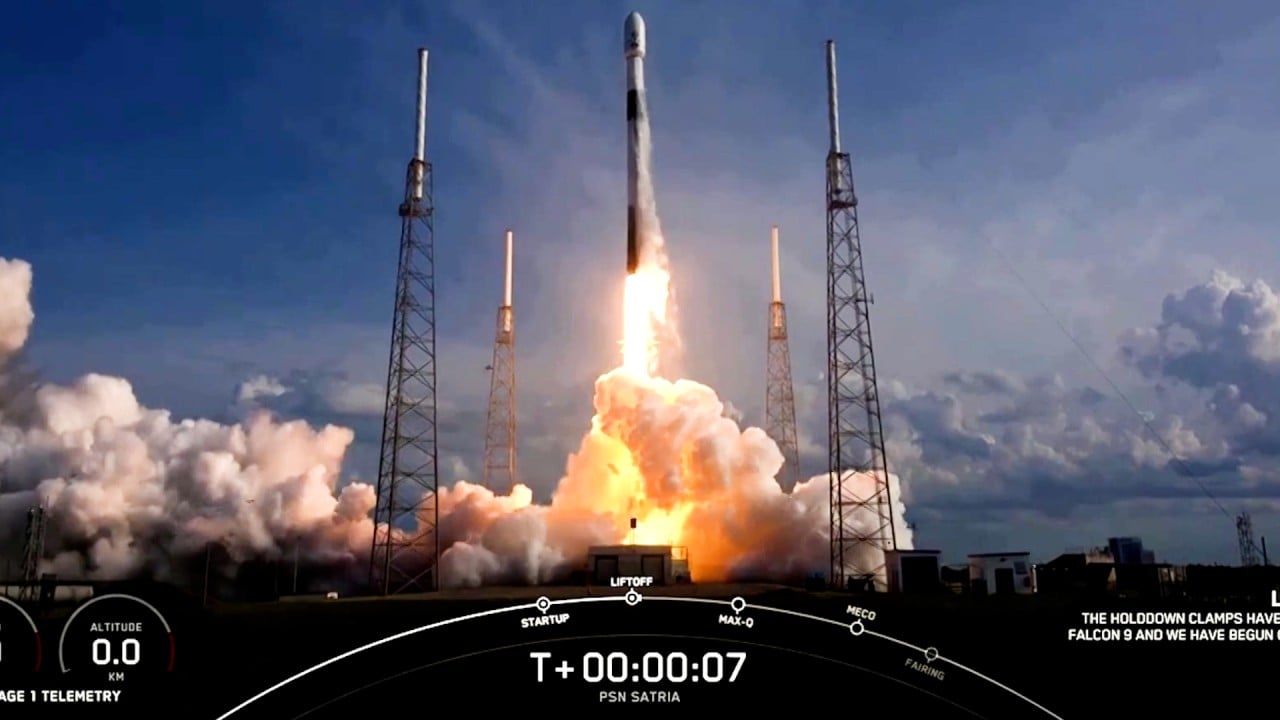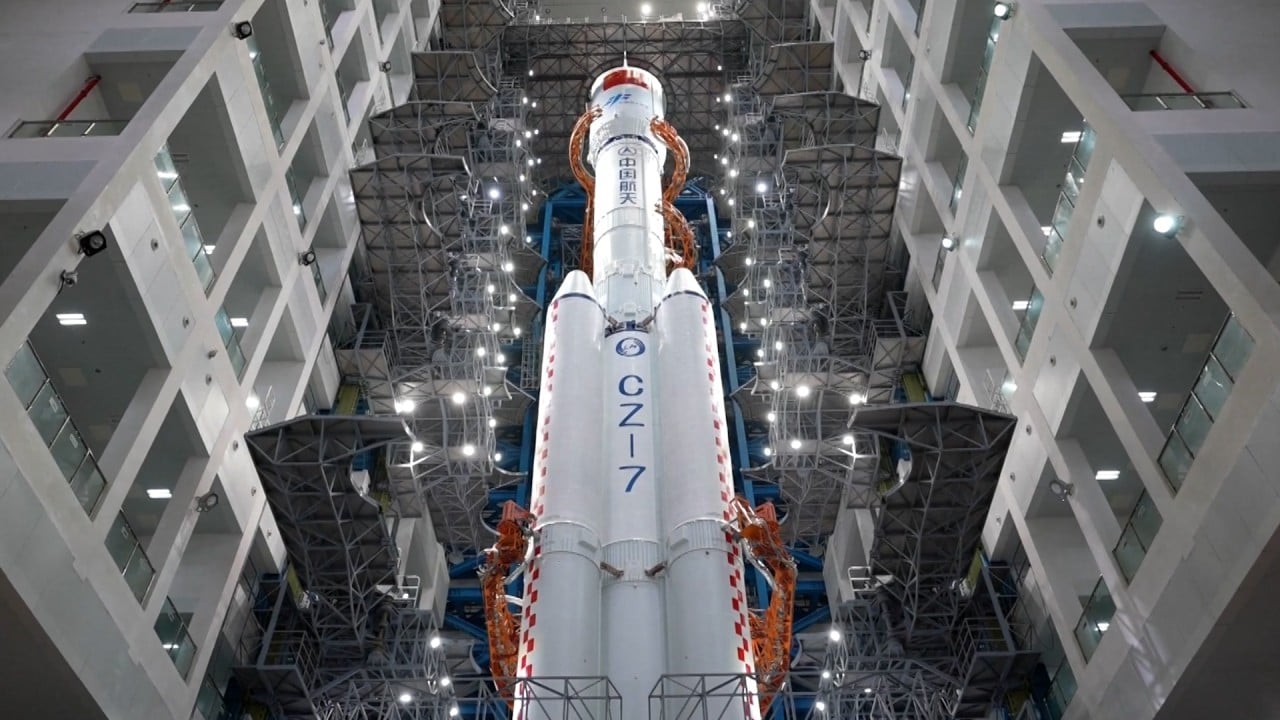A milestone achievement in a crucial communication device – which may pave the way for satellite internet, a key part in the development of 6G networks – has been announced by a team of scientists in China.
When mounted on a satellite, the device can pass light signals from one location to another without converting them to electrical signals, working more or less like a mirror.
Now it has been successfully tested in space, the team from the Xian Institute of Optics and Precision Mechanics, under the Chinese Academy of Sciences, announced.
The team of scientists has dedicated more than a decade to developing the device to enhance the capability, flexibility and speed of information transmission.
Their equipment, which is called “spaceborne optical switching technology”, was sent into orbit by China’s Y7 carrier rocket in August, according to a statement released by the academy last Sunday, saying it was the first time in China that such a device was tested on a satellite.
When downloaded and unfolded on the ground, the image information carried remained intact without any data loss.

01:21
SpaceX and Indonesia launch satellite to boost high-speed internet coverage in the country
SpaceX and Indonesia launch satellite to boost high-speed internet coverage in the country
Switches are a pivotal component in communication networks, responsible for data distribution to a certain line. When making a phone call, for instance, switches ensure that the call is routed to the intended recipient.
Traditional switching devices typically involve converting light signals into digital or simulated data, using electricity as the mediator. However, the new device directly bypasses that process.
One optical scientist said the conventional photon-electron-photon method has an “electronic bottleneck” effect, while the optical approach could maximise the speed and capacity of data exchange.
This insider, who is familiar with this test but asked not to be named, added that such a method could also reduce the costs of constructing special switching facilities.
Members of the team declined to comment.
According to a Chinese paper published last year by some members of the team, the device can support a switching capacity of 40 gigabits per second, a significant improvement compared with traditional switching technology.
Developments such as satellite remote sensing, supercomputing involving high-volume data and 6G mobile communication have all led to a growing demand for ultra-high speed and large-capacity information transmissions.
Experts believe future data networks will need to link ground communications with satellites. Photo: Shutterstock
To achieve this, industry experts have said that a revolutionary future network should be a three-dimensional one, linking ground communication nodes with satellites.
“The next-generation communication network, including 6G, will go beyond terrestrial links; it ought to be a global network that involves satellite nodes,” the scientist said.
Meanwhile, the paper published by members of the scientific team said, “We need to build a satellite internet,” going on to add it should provide global coverage and low-delay services, accessible even in sparsely populated areas and without geographical obstacles.
Traditionally, satellite-to-ground links mainly rely on microwave technology, but the speed of data transfer is limited due to the restricted range of microwave frequencies.
However the use of lasers as data carriers – known as “optical communication” – has developed quickly in recent years. Lasers have a much wider spectrum, with the bandwidth potentially reaching several hundred gigahertz, therefore able to pack more data into each transmission.
So far, a few fast-movers in the industry, such as Elon Musk’s Starlink, have deployed optical communication for inter-satellite data transfer, and some Chinese players are also joining this race.

01:46
Look out Starlink: China is supersizing its rocket industry
Look out Starlink: China is supersizing its rocket industry
When data transfer speed reaches a very high level, it will be a challenge for conventional switching facilities to process more than 100 gigabytes per second due to the capacity bottleneck, according to the scientist.
So to adjust to the growing speeds, developing a more advanced optical exchange system is vital.
“This is especially the case for interstellar links, as optical switching would be more efficient, speedy, compact and cheap,” the scientist said.
Despite the latest breakthrough from the Chinese team, researchers in the field said there was a long road ahead before such technology could be truly practical.
Huang Tao, general manager of a Guangzhou-based communication firm, said China’s satellite internet, including spaceborne optical switching technology, is still lagging behind the US, as some crucial components and materials are dominated by American entities.
“As it is going to be used in space, many components of this new device need to be tested very carefully to make sure of its performance,” the optical scientist said.